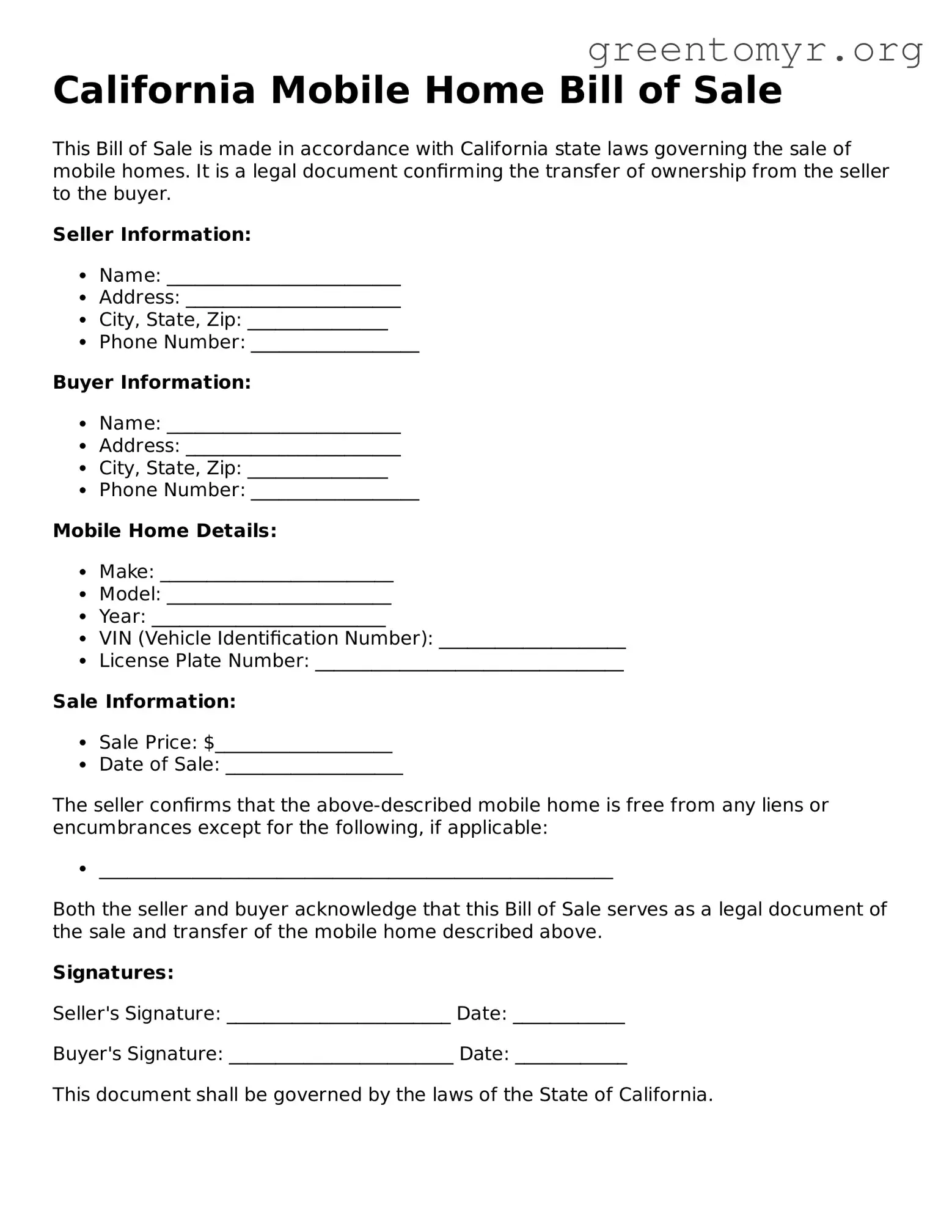California Mobile Home Bill of Sale
This Bill of Sale is made in accordance with California state laws governing the sale of mobile homes. It is a legal document confirming the transfer of ownership from the seller to the buyer.
Seller Information:
- Name: _________________________
- Address: _______________________
- City, State, Zip: _______________
- Phone Number: __________________
Buyer Information:
- Name: _________________________
- Address: _______________________
- City, State, Zip: _______________
- Phone Number: __________________
Mobile Home Details:
- Make: _________________________
- Model: ________________________
- Year: _________________________
- VIN (Vehicle Identification Number): ____________________
- License Plate Number: _________________________________
Sale Information:
- Sale Price: $___________________
- Date of Sale: ___________________
The seller confirms that the above-described mobile home is free from any liens or encumbrances except for the following, if applicable:
- _______________________________________________________
Both the seller and buyer acknowledge that this Bill of Sale serves as a legal document of the sale and transfer of the mobile home described above.
Signatures:
Seller's Signature: ________________________ Date: ____________
Buyer's Signature: ________________________ Date: ____________
This document shall be governed by the laws of the State of California.
